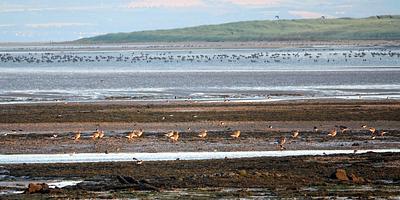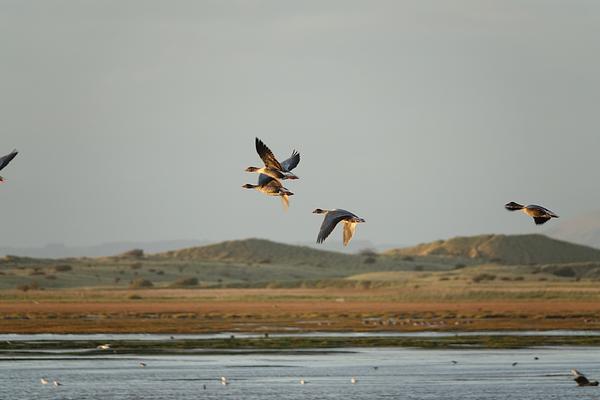
Celebrating Wetlands
Protecting wetlands
The 2nd of February marks World Wetlands Day. This celebratory day signifies the official day that the Ramsar Convention on the protection of internationally important wetlands was signed, in 1971, in the Iranian City of Ramsar which lies on the Caspian Sea.
The Ramsar Convention's definition for wetlands includes "areas of marsh, fen, peatland or water, whether natural or artificial, permanent or temporary, with water that is static or flowing, fresh, brackish or salt, including areas of marine water the depth of which, at low tides, does not exceed six meters". Or simply put, wetlands are places where land meets fresh, brackish or saltwater.
There are 51 protected Ramsar sites in Scotland including many of our important Firths and estuaries.
Under pressure
Despite the Ramsar Convention having been in place for 50 years, its team reports that 64% of the world’s wetlands have disappeared since 1900. Inland wetlands (such as marsh, fens and ponds) have disappeared much faster than coastal wetlands (such as saltmarsh, estuaries and saline lagoons). The main causes of wetland loss include land claim for agricultural crop production and grazing of livestock animals, the diversion of water through dams, dykes and canals and pollution from both air and water borne sources. The visible signs of these are evident around Scotland too. Infrastructure developments associated with our growing population and quest for everything to be bigger, faster and more convenient also leads to wetlands being destroyed or degraded.
It’s important that action is taken to protect those that remain and to bring them back into good environmental health. The National Marine Plan information, Scotland's Marine Atlas provides detailed information on coastal defences and The River Restoration Centre which highlights a number of case studies of projects that are reversing the damage.
Coastal wetlands
With our prime location on the edge of the Firth of Forth the Scottish Seabird Centre’s team takes special interest in the coastal wetland habitats of Scotland’s Firths. The term ‘Firth’ being an old Norse word meaning “arm of the sea”.
These Firths took their shape as the ice sheets of the last ice age started to melt and scoured the landscape as they retreated. They support a diversity of habitats including reedbeds, grazing marsh, saltmarsh, saline lagoons, mud- and sandflats and seagrass meadows. Mudflats are a particularly rich source of food of worms, shrimps and snails that help thousands of wintering waders and waterfowl of international importance to refuel. Under the water a range of other species including eels, flounder, salmon, sea trout and shellfish can be found. You can find out more about some of these important habitats and the wildlife these support in the Coastal and Marine Habitats and Wildlife pages of our website.

Restoring coastal wetlands
A good example of the efforts being made to protect and restore coastal wetlands can be seen through the work of the Inner Forth Landscape Initiative. This partnership sought to ensure the wetland habitats, previously squeezed by industry, commerce and land management choices, were restored. Amongst the varied projects was a managed breach of the seawall at the RSPB (Scotland) Skinflats Reserve, near Grangemouth, that transformed the farmland lying behind into a new wetland with saltmarsh and a lagoon that is thriving with wildlife. The Scottish Wildlife Trust’s Cambus Pools Reserve, near Alloa, has also been actively managed to improve the open water, grassland and reedbed habitats for a range of waders.
Wetland benefits
Coastal Wetlands provide a wide range of benefits to society by helping protect us from coastal erosion and flooding by buffering us from storm surges and acting like a sponge that can hold excess water. Sometimes they are referred to as the kidneys of the planet as they filter out pollutants and play a vital role in mitigating the effects of climate change by locking away carbon. Increasingly these habitats are referred to as “blue space” and research shows us that when we connect with these areas, getting out to enjoy and explore them, they are good for our physical and mental well-being.
Learning with the Scottish Seabird Centre
Keep an eye on our Events programme and learning resources, including our popular ‘Meet the Scientist’ events to find out more about these special places we also run a range of guided walks and citizen science projects that people can join in with, helping to build their own knowledge and to contribute to national monitoring schemes that help us understand what’s happening to Scotland’s coastal wetlands.
